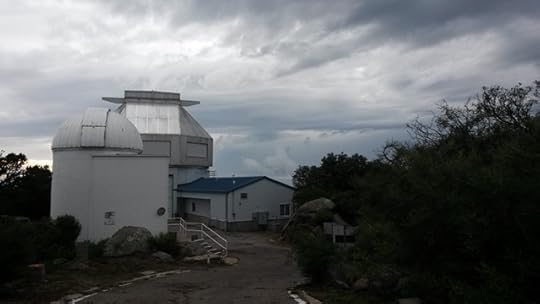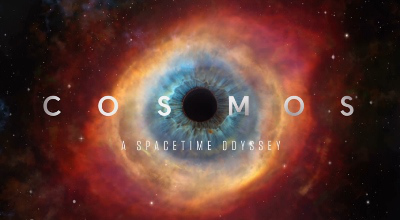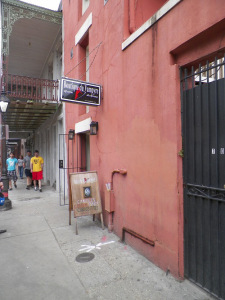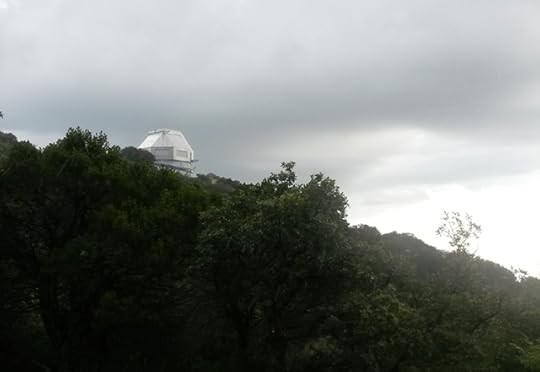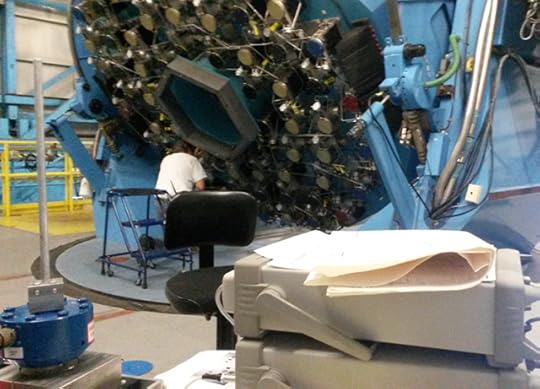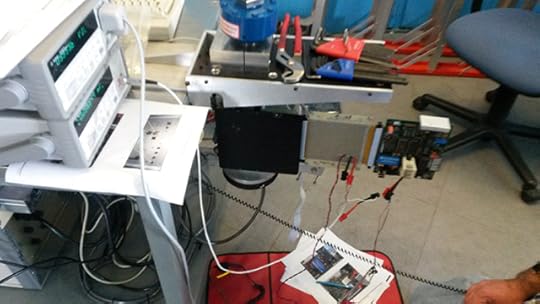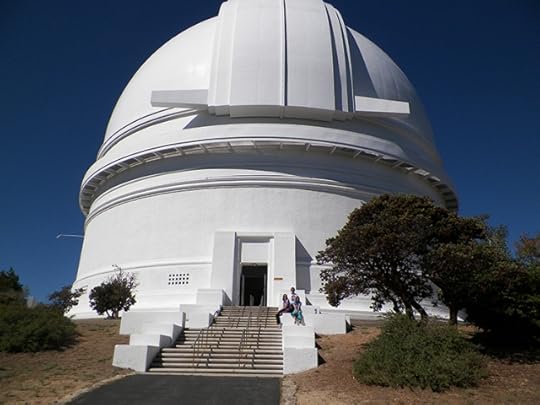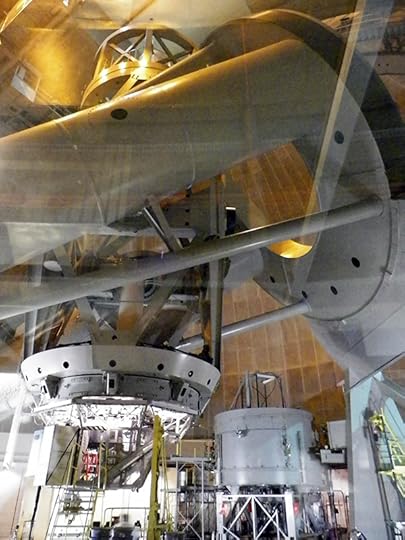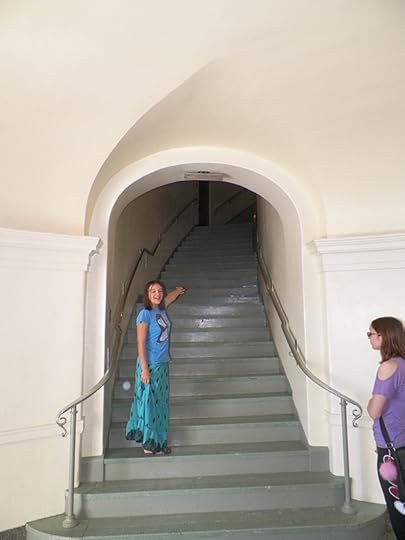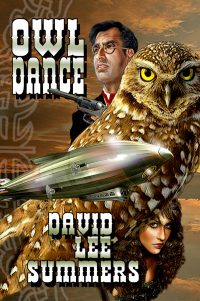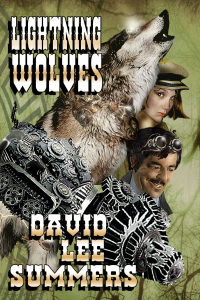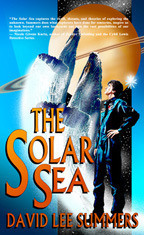David Lee Summers's Blog, page 102
September 7, 2015
Dwarf Stars Award and Deal of the Week
Some days, I wake up to an inbox full of junk, sometimes it brings a lot of work. Today, it brought some exciting news, too good to wait for my regular Saturday post. 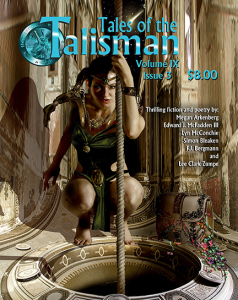 First of all, I’m proud to announce that Greg Schwartz has won the Science Fiction Poetry Association’s 2015 Dwarf Stars Award for best Short Form poem for his poem “abandoned nursing home” which appeared in Tales of the Talisman volume 9, issue 3. The runners up were Jane Yolen for the poem “Princess: A Life” published in the 2014 edition of Mythic Delirium and Robert Borski for the poem “The Square Root of Doppelgängers” which appeared in Star*Line 37.2. Congratulations Greg and the runners up! You can pick up your own copy of the issue with the award-winning poem at TalesOfTheTalisman.com or at Amazon.com. In addition to Greg’s poem you’ll find great stories and poems by Megan Arkenberg, Edward J. McFadden III, F.J. Bergmann, and Lee Clark Zumpe.
First of all, I’m proud to announce that Greg Schwartz has won the Science Fiction Poetry Association’s 2015 Dwarf Stars Award for best Short Form poem for his poem “abandoned nursing home” which appeared in Tales of the Talisman volume 9, issue 3. The runners up were Jane Yolen for the poem “Princess: A Life” published in the 2014 edition of Mythic Delirium and Robert Borski for the poem “The Square Root of Doppelgängers” which appeared in Star*Line 37.2. Congratulations Greg and the runners up! You can pick up your own copy of the issue with the award-winning poem at TalesOfTheTalisman.com or at Amazon.com. In addition to Greg’s poem you’ll find great stories and poems by Megan Arkenberg, Edward J. McFadden III, F.J. Bergmann, and Lee Clark Zumpe.
Another piece of great news is that my novel Heirs of the New Earth is on sale this week for only 99 cents. 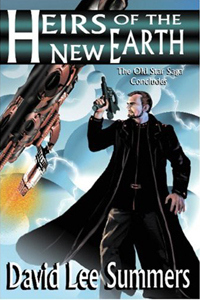 If you’ve started the Old Star/New Earth trilogy, but have been waiting to complete your collection, this is a great opportunity to get the final book in the series. The Earth has gone silent as the novel begins. John Mark Ellis and the crew of the mapping vessel Nicholas Sanson are sent to investigate. When they arrive, they find vast alien machines known as Clusters in orbit. Fearing the worst, they land and discover that the once overcrowded, polluted Earth has become a paradise of sorts. The problem is over half the population is dead or missing and the planet’s leaders don’t seem to care. As Ellis works to unravel the mystery, sudden gravitational shifts from the galaxy’s center indicate something even worse is in the offing. Can Ellis save the galaxy from the heirs of the new Earth? For those who are fans of my Captain Firebrandt short stories, this novel has some great moments for the old pirate captain. The ebook is on sale directly from my publisher at: http://lachesispublishing.com/?product=heirs-of-the-new-earth
If you’ve started the Old Star/New Earth trilogy, but have been waiting to complete your collection, this is a great opportunity to get the final book in the series. The Earth has gone silent as the novel begins. John Mark Ellis and the crew of the mapping vessel Nicholas Sanson are sent to investigate. When they arrive, they find vast alien machines known as Clusters in orbit. Fearing the worst, they land and discover that the once overcrowded, polluted Earth has become a paradise of sorts. The problem is over half the population is dead or missing and the planet’s leaders don’t seem to care. As Ellis works to unravel the mystery, sudden gravitational shifts from the galaxy’s center indicate something even worse is in the offing. Can Ellis save the galaxy from the heirs of the new Earth? For those who are fans of my Captain Firebrandt short stories, this novel has some great moments for the old pirate captain. The ebook is on sale directly from my publisher at: http://lachesispublishing.com/?product=heirs-of-the-new-earth
Finally, I’d like to turn your attention to my Scarlet Order Vampire Journal. I recently had a wonderful book signing at Boutique du Vampyre in New Orleans. Not only did I recap the events of the signing, but I shared how you can obtain special signed copies of Dragon’s Fall: Rise of the Scarlet Order and Vampires of the Scarlet Order. If you haven’t already, be sure to drop by the post at https://dlsummers.wordpress.com/2015/08/31/signing-at-boutique-du-vampyre/ to get the full scoop!


September 5, 2015
Laboring on Labor Day Weekend
No one can predict the weather. That’s even true for world-class astronomers and astrophysicists. As a result, the world’s premier facilities for collecting astronomical data, such as Kitt Peak National Observatory, are staffed year-round regardless of weekdays or holidays, so that we can take advantage of clear, stable skies whenever they occur. The only exception the observatory makes most years is Christmas and Christmas Eve. This year, one of my shifts happens to fall over Labor Day Weekend. Unfortunately, Tropical Storm Kevin off the coast of Baja California is also pumping lots of moisture up here, so we’re spending some of our time waiting, watching and hoping the skies will clear.
Of course, even with clouds, it’s not all waiting around, doing nothing until the skies clear. Over the course of the summer monsoon shutdown, a new Telescope Control System was installed at the Mayall 4-meter telescope. All indications are this new control system had made great improvements in the pointing and tracking performance of a 45-year old telescope, getting it ready for a new world-class spectrograph that will be installed over the coming years. Still, it means I get to learn how to drive the telescope all over again, and it’s best if I do that on these cloudy nights so I’m ready to go when the skies clear and astronomers go hunting those photons that may have taken thousands, millions, or even billions of years to reach us.
Keeping busy right now is good, since my editor dropped me a note at the beginning of the week, saying that she’s started editing my horror novel, The Astronomer’s Crypt. So now I’m at that nail-biting stage of wondering which scenes she’ll like and which ones she’ll want rewritten. Her note mentioned that I better not give her nightmares. I can’t help but wonder if my horror novel fails to give her nightmares will I have have succeeded or failed! Seriously, though, these dark and stormy nights that we’re having at the observatory right now are not a little like the one described in the novel. Stay tuned for more news!
Working Labor Day Weekend also means that I have the following weekend off, which means I get to display my books in Artist’s Alley at Las Cruces Comic Con. You can find more information about the event at: http://lascrucescomiccon.org/. I’ll be in the vendor hall all three days of the event. For all my friends in Las Cruces, I hope you’ll drop by the table and say “hi!”


August 29, 2015
Cosmos: A Spacetime Odyssey
The autumn of 1980 was perhaps one of the most difficult times of my life. My father died suddenly of a heart attack just about six weeks before my fourteenth birthday. One thing that helped pull me through that difficult time was Carl Sagan’s original Cosmos. It fostered my love of astronomy and set me on a course that would eventually earn me a degree in physics. Thirty-five years later, I’m now sharing Neil deGrasse Tyson’s updated Cosmos with my daughters. My youngest is the same age I was when I discovered Sagan’s original.
Overall, I’ve been impressed with the series. I can nitpick some places where they’ve sacrificed precision in how a particular astronomical object or phenomena is depicted in the name of dramatic effect, but for the most part Tyson gets the important things right. The show has allowed me to better explain the importance of spectra in my work at Kitt Peak. I was delighted to see an episode featuring Henrietta Leavitt, Annie Jump Cannon, and Cecilia Payne-Gaposchkin. I was able to discuss how they influenced both my work and how people they worked with directly inspired teachers of mine such as Emilia Belserene at Maria Mitchell Observatory. I also appreciated the discussion about how neutrinos can precede supernova explosions, though I noticed they managed to leave out mention of Stirling Colgate’s important contributions to that work.
Perhaps the most important thing about the series is that I see the same wonder on the faces of my daughters that I had when I watched Carl Sagan’s original series. My oldest daughter has already set her sights on a degree in mathematics and computer science. My youngest still has options wide open. I hold no strict expectation she’ll pursue a career in science, but I do expect she’ll come to respect the process of science and hold an appreciation of it no matter what she does.
Unlike Neil deGrasse Tyson, I hold no Ph.D. My career in astronomy diverged from a strictly academic path into more of an engineering and support path. Despite that, I feel it’s important to convey my love of science in classrooms as well as science fiction and steampunk conventions. In fact, I think there’s value in showing that you don’t need a Ph.D. to appreciate, use, and act on scientific discovery. Because of my interest in communicating about science, I’ve been paying close attention to Tyson’s presentations. He is a good, clear communicator and I’ve especially enjoyed seeing how he introduces subjects such as stellar spectroscopy, supernovae, and black holes.
In the most recent episode I watched, Tyson presented the sobering evidence for climate change. There’s been a lot of debate about it, but as he notes there’s well over a century of solid evidence that carbon dioxide is increasing and global temperatures are warming. He notes that weather is hard to predict and there are lots of minute variations. He demonstrated this by walking a dog. The dog goes all over the place, attracted by different things. However, climate is like the man holding the leash. There may be random variations, but there’s also an overall path. Although climate change is a sobering reality, I appreciated that Tyson showed that there is hope. We have to work hard and make solar and wind energy a reality and we need to do it much faster than we have been.
Now some will say addressing climate change is just too big a problem to address. I watched this episode after visiting New Orleans ten years after Hurricane Katrina. Ten years ago, some people said rebuilding New Orleans was just too big a challenge, we should let the city go. Although Katrina still echoes in New Orleans, it’s returned to being a bright and vibrant city. Researchers at Tulane University are working on finding ways to restore the gulf coast and perhaps even find ways to make New Orleans much safer should another hurricane strike. We humans are amazing and we can solve the big problems when we set our minds to it.
I appreciate the effort Neil deGrasse Tyson, Ann Druyan, and Seth MacFarlane have put into bringing a new version of the show back. I hope it inspires a new generation to look at the world with wonder and to take the scientific process seriously.


August 22, 2015
New Orleans Vampires and Bubonicon 47
I’m sorry to miss Sasquan, the 73rd annual WorldCon being held in Spokane, Washington this weekend. Sky Warrior Publishing, publisher of my Clockwork Legion Steampunk books is there. If you’re at Sasquan, be sure to visit them and support them by buying their books. They have a terrific selection. Also, I have friends in the running for the Hugo Award, which will be presented at Sasquan tonight. I wish them luck and I wish I was there to support them! I know it’s been a turbulent year for the Hugos, but I hope tonight’s festivities hold nothing but fun for those involved.
Although I’m genuinely sorry to miss WorldCon this year, I find myself thinking of one of my favorite moments from the San Antonio World Con two years ago. I was staying at a motel some distance from the convention, both for budget reasons and so I could have a quiet retreat from the convention. One night, I stopped at a Subway sandwich shop on the way to the motel. I was the only one there, along with the clerk. It turns out he was a science fiction fan, but couldn’t afford to go to WorldCon. We spent several minutes chatting. I told him about highlights of the day. He asked me what I wrote and he ended up buying one of my books. The episode reminds me that not all fans are at WorldCon and even those who don’t have to travel far can’t go for various reasons.
Today, I’m grateful to have been invited to sign my vampire novels at Boutique du Vampyre in New Orleans, where I am this weekend on family business. I’ll be at the Boutique from 3 to 6pm. Be sure to drop by and check out my books and the great selection of vampire goodies. I’m delighted for the chance to make friends and meet fans in New Orleans this weekend.
Next weekend, I’ll be at Bubonicon in Albuquerque, New Mexico. This year’s theme is “Women of Wonder” and the guests of honor are Catherynne M. Valente and Tamora Pierce. The toastmistress is Mary Robinette Kowall. Here’s my schedule for the weekend:
Friday, August 28
4pm – Main Room – Whither Ghost? Dancing with the Definitely Dead. Zombies are hot (which must startle them), but let’s not abandon ectoplasm. What roles do true ghosts play in the metaphoric dance of SF/F? What archetypes do they carry? Or are they just devices, good for frisson? How do ghosts in a story affect time and space? The forms ghosts take vary from culture; what are some wonderful ones we may be unfamiliar with? On the panel with me are Mary Robinette Kowall, Betsy James, Darynda Jones, and Sarena Ulibarri.
8:45pm – Santa Fe Room – 40 Minutes With David Lee Summers. I tentatively plan to read my Lovecraftian Steampunk story “Reckoning at the Alamo” which is scheduled to appear in the second volume of the Lost Trails anthology series. If time permits, I may also read “Born Again Miners” from Zombiefied: Hazardous Materials
9:30pm – Main Room – Who Can it Be Now? Characters With Flaws. Is a flawed character, hero or villain, necessary in today’s fiction? Are the days of the white and black hats over, or can today’s readers tolerate a purely good or evil character without inner or outer flaws of morality, ethics, and motivations? Were there ever such characters at all? Conversely, how much anti-hero and sympathetic villain nature can be tolerated by readers before they are turned off? Which flawed characters work best? On the panel with me are Ben Bova, S.M. Stirling, Caroline Spector, and Walter Jon Williams.
Saturday, August 29
10am – Main Room – Red or Green. N.M. as a Mars Analog. Does New Mexico share common features with Mars? Does the Red Planet have special appeal to NM scientists, readers, and writers? How are the two similar? Is NM a great training ground for a manned Mars mission? NM is lucky enough to have Larry Crumpler on the Mars Rover team, and Zachary Gallegos as one of the 100 finalists for the proposed Mars One Mission. What other NM scientists are doing Mars research? What does the appeal of the New York Times bestseller The Martian by Andy Weir mean for present and future Mars interest and projects? On the panel with me are Larry Crumpler, Zachary Gallegos, Loretta Hall, Christine MacKenzie, and Catherine S. Plesko.
Sunday, August 30
10am – Main Room – It’s Alive: Scientists in Science Fiction. In Hollywood, everyone “knows” that scientists are typically treated as supervillains or antisocial nerds. But more and more, it appears that scientist characters are playing the hero. Have scientists truly escaped the old stereotypes? If so, what’s with the change of heart? What caused the stereotypes in the first place? The Atomic Age or maybe “messing around in God’s Domain?” I’ll be moderating this panel that also includes Daniel Abraham, Josh Gentry, Jeffe Kenedy, Catherine S. Plesko, and M.T. Reiten.
In addition to these events, I’ll be helping out at the Bubonicon Author’s Tea, which is a special event where the authors of Bubonicon say “thank you” to the fans by presenting them with a fun, event. As of this writing, I don’t know which sessions I’ll be helping with, but seating is limited and it’s worth coming to any of them.
When I’m not otherwise scheduled, you’ll find me at the Hadrosaur Productions room in the dealer’s room. Please drop by and say “hi!”


August 15, 2015
It’s Sugar Time!
This week, I’ve been revisiting an old friend of sorts. Back in 2002, Hadrosaur Productions recorded an audio edition of three short stories by Joy V. Smith and released them under the collective title, Sugar Time. 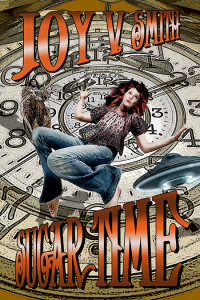 There was a fourth story, which we published in Hadrosaur Tales magazine. Talking to Joy, we decided it was high time to bring out all four stories in a single edition. We’ve released them in print and ebook formats. The beautiful new cover is by Laura Givens.
There was a fourth story, which we published in Hadrosaur Tales magazine. Talking to Joy, we decided it was high time to bring out all four stories in a single edition. We’ve released them in print and ebook formats. The beautiful new cover is by Laura Givens.
Here’s the blurb from the back of the book:
Her name is Sugar. Sugar Sweet. But never EVER call her ‘Sweetie.’
When Sugar’s Uncle Max falls ill and his collaborators disappear, she investigates the old Victorian mansion where he conducted his research. She soon finds the collaborators—or what’s left of them—along with an angry Neanderthal. She also finds her uncle’s research project, a working time machine. Sugar must act quickly to unlock the secret of time travel so she can set things right and protect her uncle’s research.
Sugar Time collects Joy V. Smith’s Sugar Sweet stories into one volume.
I had a lot of fun going back and re-reading these stories. A couple of elements make these stories stand out from the usual time travel stories. First is an element of mystery. In particular, Sugar meets two creatures from the past that her uncle called Chessies. They are cat-like creatures whose eyes can disappear into their fur and resemble a certain famous feline from Alice and Wonderland. These are creatures not in the fossil record and it’s not until the end that Sugar figures out the true story of their origin.
Another thing that stands out about Sugar Time is the period of time Sugar explores. In many time travel stories, we see people travel through human history. Every now and then, you’ll find a story that takes you to the time of dinosaurs. Joy will take you to the Pleistocene Epoch to see Neanderthals and Saber-tooth cats. It’s quite a thrill ride, and one you don’t want to miss.
The ebook edition of Sugar Time is currently available at Amazon, Smashwords, and Kobo, with more vendors coming soon.
The print edition of Sugar Time is available via Amazon and Hadrosaur Productions.
And, of course, the audio CD is still available through Hadrosaur Productions and well worth a listen. It still has the old cover, but Laura Givens made that one over, too. The new audio cover will be debuting as soon as I run the next batch of disks.


August 8, 2015
Summer at Kitt Peak
In a typical year, July and August bring monsoon rains to Arizona and New Mexico. The rain is much needed in the desert, but it does mean poor observing conditions for most of those two months. Because of that, the observatory typically shuts down its major telescopes for ongoing maintenance and upgrades that help keep them state of the art.
Those of us who work principally at night, often get a more relaxed schedule, which enables us to take vacation time. When we’re at work, we often get a chance to lend a hand on projects around the observatory. This past week, I worked during the daytime, helping with a couple of projects at the WIYN 3.5-meter telescope. One of those projects was cleaning, tuning, and testing the actuator control cards on the back of the WIYN telescope.
Here you see the back of the WIYN 3.5-meter telescope. Each of those disks at the back are attached to a motor and a rod, which deform the telescope’s primary mirror so it has the optimal shape, no matter where it’s pointed in the sky. With time, the electronics in each of those actuators becomes less reliable.
So, for example, the WIYN primary mirror weighs about 4200 pounds. When working properly, the actuators should measure that weight pretty accurately. However, with wear and tear, they reached a point where they were measuring the weight as 4570 pounds. As I write this, we’ve tuned about about one third of the cards and now the weight is reading 4370 pounds, much closer and an indication that we’re doing much-needed work. Here’s one of the control cards in its test bench setup.
Another project I helped with this week was upgrading the drives for the filter arms on the One-Degree Imager at WIYN. In essence, the whole objective of having a camera on a telescope is to accurately measure the amount of light coming into it from distant stars and galaxies. However, visible light is made up of all the colors of the rainbow. Red light, blue light, and violet light are all jumbled together. So, the best way for us to measure light accurately is to take black-and-white pictures with colored filters in front that allow light of precise frequencies to pass through.
The One-Degree Imager has filters that are approximately one-foot by one-foot square. It takes a lot of force to move those pieces of glass and hold them rigidly in place.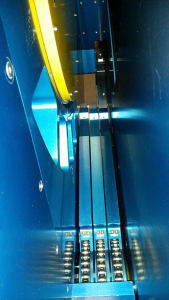 In the photo on the left, you’re looking down on the filter arms. The filter arms used to be held in place by a series of gears. However, the force required to move those arms was so great, the gears were literally grinding themselves to dust. So the gear system has been replaced by a system which utilizes a chain drive like that you might find in a motorcycle! You can see the chain on the bottom of the photo. I’m looking forward to the new observing season when we get to use this new filter drive system. It promises to move and hold the filters much better than the old system.
In the photo on the left, you’re looking down on the filter arms. The filter arms used to be held in place by a series of gears. However, the force required to move those arms was so great, the gears were literally grinding themselves to dust. So the gear system has been replaced by a system which utilizes a chain drive like that you might find in a motorcycle! You can see the chain on the bottom of the photo. I’m looking forward to the new observing season when we get to use this new filter drive system. It promises to move and hold the filters much better than the old system.
Another project that’s moving forward is the Extreme Position Doppler Spectrometer which NASA is contracting for the WIYN telescope in order to support space missions searching for planets around other stars. This week, I was asked if I would provide input into how to practically operate this device. It sounds like I’ll learn more this autumn, but I’m looking forward to the challenge and hoping I’ll have something good to contribute which will both help achieve the mission objectives and make it a user-friendly instrument.
In the meantime, I have not forgotten my literary endeavors. I just finished editing a four-short story collection called Sugar Time written by Joy V. Smith. Hadrosaur Productions published an audio book edition some years ago, but this will be an ebook and chapbook containing the four original stories with new cover art by Laura Givens. Look for more details in next week’s blog post.
Also, if you live in New Orleans or will be visiting on the weekend of August 22, please drop by Boutique du Vampyre in the French Quarter between 3 and 6pm, where I’ll be signing copies of Vampires of the Scarlet Order and Dragon’s Fall: Rise of the Scarlet Order.


August 1, 2015
A Visit to Palomar
Last weekend, I had the privilege of attending my niece’s wedding. It was a delightful event held near the beach in San Juan Capistrano, California. I was pleased not only to be part of my niece’s special day and meet my new nephew, but to spend time with my brothers and their families as well. On the way back to New Mexico, we decided to make a side trip to see the 200-inch Hale telescope on Mt. Palomar.
It’s rare for me to visit observatories during my vacation time from Kitt Peak National Observatory. Much as I like astronomy, the whole point is to get away from the day-to-day routine just like anyone in any other job. However, Palomar is a special place. When it was built in 1948, it was the largest reflecting telescope ever built and it held that record up until 1976. Because it was built in 1948, the Hale looks very much like a battleship. In its ArtDeco dome, the telescope seems like something that belongs in a steampunk or dieselpunk story.
Although built in 1948, the Hale telescope is still active today. Among its achievements, it was used to determine an accurate distance to the Andromeda Galaxy. It identified the optical counterparts to the first quasars. Today, it is one of the few telescopes that has successfully imaged planets around other stars. William Fowler, using data from the Hale telescope is the man who figured out how stars synthesize heavier elements from lighter ones. Years later, after he won the Nobel Prize, I would enjoy a beer with Dr. Fowler at the Capital Bar in Socorro, New Mexico.
The Hale Telescope’s primary mirror is 200 inches in diameter, or just a little over 5 meters. The telescope is owned and operated by the California Institute of Technology, which means only CalTech astronomers or their collaborators get a chance to use the facility. The Kitt Peak 4-meter telescope was built with Federal funding to give all astronomers an equal chance at access to a similar telescope. So, the two observatories are definitely cousins of a sort. In fact, one of Fowler’s collaborators, Dr. Geoffry Burbidge, was Kitt Peak’s director from 1978 until 1984.
I recently signed a contract for a new horror novel called The Astronomer’s Crypt. The observatory in the novel isn’t real, but rather an amalgam of observatories I know from around the Southwest. That said, it really struck me that Palomar has a lot in common with my fictional Carson Peak Observatory. Like most observatories, they’re in remote locations. There are small towns nearby, down the long, winding road away from the observatory. There are even nearby Indian casinos, like the novel’s Sacred Portals Casino! What’s more, the primary telescope in The Astronomer’s Crypt is a 5-meter, just a smidge smaller than the Palomar 200-inch! Also, like Palomar, the mountain has few telescopes. The Hale only shares the mountaintop with two other active telescopes. The 5-meter in The Astronomer’s Crypt only shares its mountain with one other telescope.
Also, as far as I know, there are no bodies buried in or near the Hale 200-telescope, but it does have a cool stairway worthy of good horror movie!


July 25, 2015
Half off the Clockwork Legion
Smashwords is having a special promotion through July 31, which means this is an opportunity to grab my Clockwork Legion Steampunk novels for 50% off the regular ebook price!
In 1876, Sheriff Ramon Morales of Socorro, New Mexico meets a beguiling woman named Fatemeh Karimi of Persia, escaping oppression in her homeland. When an ancient lifeform called Legion comes to Earth, they are pulled into a series of events that will change the history of the world as we know it. In their journeys, Ramon and Fatemeh encounter mad inventors, dangerous outlaws and pirates. Their resources are Ramon’s fast draw and Fatemeh’s uncanny ability to communicate with owls. The question is, will that be enough to save them when a fleet of dirigibles from Czarist Russia invades the United States?
Fred Cleaver of the Denver Post calls Owl Dance “…a fun steampunk Western filled with adventures.” Richard Harland, author of Worldshaker and Liberator says Owl Dance “…has everything. Airships, owl-ornithopters, a clockwork wolf, a multiple alien entity, a fast-shooting sheriff, a Russian plot to conquer America, and a very sexy, eco-aware, Bahá’í Persian healer-woman—I mean everything! Heaps of fun!”
Owl Dance is available at Smashwords. Use the code SSW50 on checkout to get the 50% off discount.
It’s 1877 and Russians have invaded the Pacific Northwest and are advancing into California. New weapons have proven ineffective or dangerously unstable and the one man who can help has disappeared into Apache Country, hunting ghosts. A healer and a former sheriff lead a band into the heart of the invasion to determine what makes the Russian forces so unstoppable while a young inventor attempts to unleash the power of the lightning wolves.
Neal Wilgus of Small Press Review says Lightning Wolves is “…great fun to read and well worth the time spent doing so. Don’t miss it!” Deby Fredericks, author of Seven Exalted Orders and The Grimhold Wolf says Lightning Wolves is “…full of adventure and crazy inventions but with some honesty about the prejudices and mores of the day. This is as much alternate history as adventure tale, with an ethnically diverse cast fighting battles that never were.”
Lightning Wolves is available at Smashwords. Use the code SSW50 on checkout to get the 50% off discount.


July 18, 2015
Pluto and Las Cruces
This has been an exciting week as the New Horizons Probe has flown by Pluto. The views of this little world and its moon Charon have really made them come alive as places on the distant edge of our solar system. Although I’m not directly involved with the Pluto teams, I know several people who are, including one person on the imaging team who brought us the now famous image of the “heart” on Pluto and a person who was responsible for helping the craft navigate Pluto’s crowded system of five moons. However, perhaps the person connected with Pluto, I was most honored to know was Clyde Tombaugh, the man who made the initial discovery.
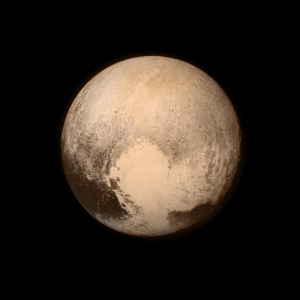
This July 13, 2015 image provided by NASA shows Pluto, seen from the New Horizons spacecraft. (NASA via AP)
I can’t say I knew Clyde well. He had retired by the time I arrived at New Mexico State University in 1995. Still he regularly attended astronomy department colloquia and maintained an interest in the department’s activities—not surprising, since he founded the NMSU astronomy department. I attended Clyde’s 90th birthday party, hosted by the department and learned a lot about him from the department chair’s address. Sadly, I attended his funeral less than a year later. This week, as New Horizons flew by Pluto, the Albuquerque Journal interviewed me about my recollections of Clyde.
I maintained two of his telescopes—a small solar telescope used for department events and a larger telescope which was in Ecuador in the 1950s and used to search for small, undiscovered bodies orbiting the Earth. The negative result for that study had important ramifications for the next decade’s space program. Two years after Clyde passed away, I was asked to portray him at Las Cruces city events celebrating the 150th anniversary. This video shows a public service announcement which ran on KRWG TV where I portrayed Clyde:
As it turns out, discovering Pluto was only the beginning of Clyde’s career. Afterwards, he went to college and graduate school. That’s right, Clyde only had a high school diploma when he discovered Pluto! He discovered several asteroids. He was one of the first people to notice that the universe had a large scale structure. As I mentioned earlier, he looked for, but didn’t find, objects besides the moon orbiting the Earth, and he founded the astronomy department at New Mexico State University. He also founded the Unitarian Church in Las Cruces. Now, he’s also the first man whose ashes are being carried outside the solar system on the New Horizons probe.
My own explorations of the solar system have been much more humble. I’ve helped look at asteroids that would pass near the Earth and I’ve also helped with programs looking for distant Kuiper Belt objects beyond the orbit of Pluto. Nevertheless, I find the whole process of exploring the solar system exciting and would jump at the chance to do so. I imagined such a voyage in my novel The Solar Sea. You can learn more about the novel, watch a book trailer, read a sample chapter, and see some cool illustrations based on the novel at TheSolarSea.com


July 11, 2015
The Author as Brand
I started this week thinking about some updates I’d like to do for a website that promotes my science fiction novel, The Solar Sea.  As the week progressed, a possible book signing opportunity for my vampire novels came up, which got me thinking about those stories and what kinds of things I’d like to do as part of the event. Yesterday, a letter arrived which had a nice review of my steampunk novella, Revolution of Air and Rust. It’s been something of a fun, but dizzying dance and it’s caused me to think a bit about the notion of the author as a brand.
As the week progressed, a possible book signing opportunity for my vampire novels came up, which got me thinking about those stories and what kinds of things I’d like to do as part of the event. Yesterday, a letter arrived which had a nice review of my steampunk novella, Revolution of Air and Rust. It’s been something of a fun, but dizzying dance and it’s caused me to think a bit about the notion of the author as a brand.
If you pick up a book by Stephen King, you know there’s a good chance you’ll get a strong, character driven horror story. If Diana Gabaldon wrote the novel, there’s a good chance it involves time travel, romance, and Scotsmen. At some level, I’m not so easy to pin down. I’ve written about space pirates in the far future, vampires in the present, and mad scientists in the Arizona desert of a century ago. I have fun exploring all these things and I’d have a difficult time picking just one topic to explore in my writing.
I have to admit, thinking about myself as a “brand” always feels a little weird. 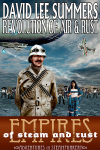 That said, I think there are some common features among all David Lee Summers novels and stories. I see much of my writing as a search for the magic within science and conversely a search for science within magic. Specifically, I like to find ways of making magical things seem plausible and explainable, but I temper that with a sense that science is a process of learning, which means we don’t always know as much as we think!
That said, I think there are some common features among all David Lee Summers novels and stories. I see much of my writing as a search for the magic within science and conversely a search for science within magic. Specifically, I like to find ways of making magical things seem plausible and explainable, but I temper that with a sense that science is a process of learning, which means we don’t always know as much as we think!
In various conversations, it’s clear that not everyone who likes my science fiction is interested in my horror. Not everyone who reads my horror is interested in my steampunk. That doesn’t bother me at all. My own reading can depend on a lot on my mood on a given day. Still, there are some people who seem to like it all and find those threads that link the books together.
I’m not the only writer who has an interest in several genres. Some take on pseudonyms for the different genres they write. Others, such as Cherie Priest and Jane Yolen, have found some success writing for multiple audiences and in multiple genres under their own name.
One reason I raise this topic is that I’ve been thinking about setting up more of a presence for my books in venues like Facebook. 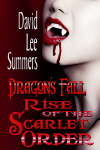 An easy solution would be to set up a page for “David Lee Summers, Author.” As I mentioned earlier, though, I find it a little strange to think of myself as a “brand.” It easier to think of “The Scarlet Order Vampires” as a brand or “The Clockwork Legion” as a brand. In fact “The Scarlet Order Vampires” have their own blog and page on Facebook, which leads me to wonder if it would be better to create pages for my different book series. The problem then, is providing new and fresh content regularly for all the pages!
An easy solution would be to set up a page for “David Lee Summers, Author.” As I mentioned earlier, though, I find it a little strange to think of myself as a “brand.” It easier to think of “The Scarlet Order Vampires” as a brand or “The Clockwork Legion” as a brand. In fact “The Scarlet Order Vampires” have their own blog and page on Facebook, which leads me to wonder if it would be better to create pages for my different book series. The problem then, is providing new and fresh content regularly for all the pages!
So, I thought I might throw this question out to those who read the ol’ Web Journal. Do you prefer to follow one author’s site or Facebook page, even if they write series that don’t interest you? Or, do you prefer to simply follow those series which interest you? I’m guessing there’s no one right answer, but I’d love to hear your thoughts on the subject.



